|
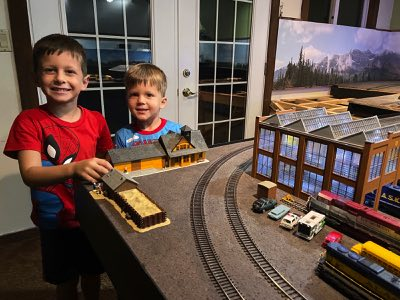 |
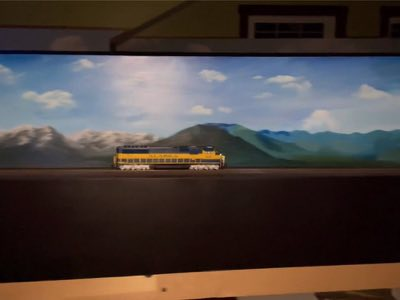 |
| Our Indiana grandsons are staying with us for a week while their parents take a vacation. At the top of Liam's "to do" list is to run trains. He is an expert with the RailPro controller and soon has an SD70MAC roaming the rails. |
His brother Lincoln is still too young to run the train. It isn't that he can't do it, I just don't trust him with a $150 controller quite yet. However, both are content to play with several old buildings and people. |
They both enjoy running trains in the dark watching the headlight illuminate the surroundings. I decided to take a darkly lit video, but my iPhone had other ideas and turned its flash on as a spotlight. Pfffttt! It is fun to play in the dark with the room only lit by the locomotive, diesel shop and Rick's RailPro status panel. |
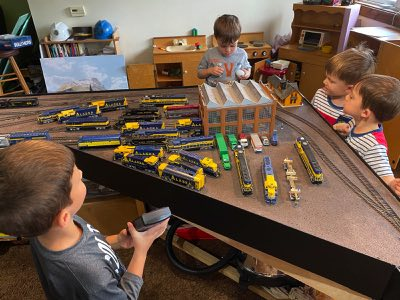 |
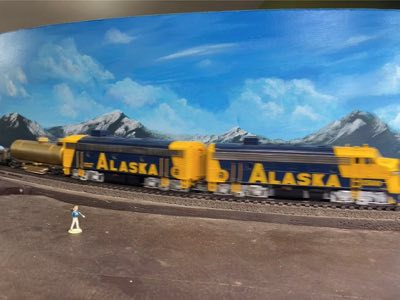 |
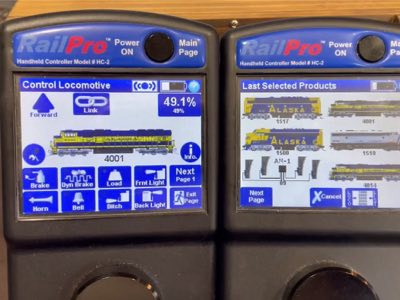 |
| The next day our twin grandsons came by for a day of fun as well as a sleep over. Soon all four grandsons were watching trains and playing with people and buildings. Here they watch Liam run F7 #1500 (hidden by the diesel shop). By my estimate we are 2-3 years away from brother-in-law Mike Cooper's dream of four grandsons each with their own controller and train....and some adult supervision, of course! |
I used "grandson nap time" to do some rail cleaning. Here is a video of F-units #1500 and #1517 pulling the cleaning and wiping car. I really didn't have a plan and wound up mindlessly letting the train run for 25-30 cleaning loops while I attended to other things on the layout. |
On the Facebook RailPro group someone asked if you could have more than one controller on a layout. Sure thing Skippy! He then wanted to know what would happen if one controller selected the locomotive used by the other controller. I prepared and posted the above video to answer his question. |
|
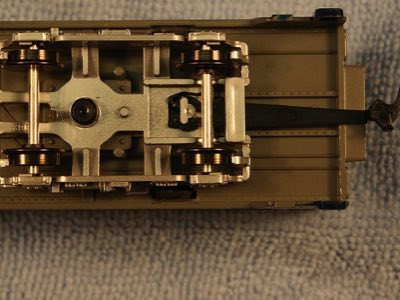 |
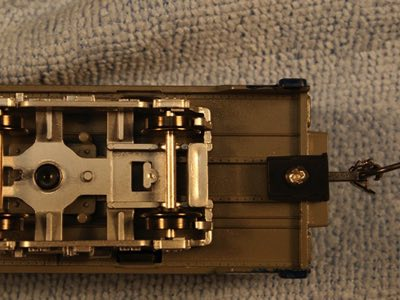 |
| No grass was growing under Rick's feet this week. He has all five tracks mounted on the barge and cut them to the same length. Why did he use rails with ties? To ensure the rails are held tightly in place forever. He will eventually cover the ties with plaster and cut grooves in it for the wheel flanges. |
Passenger cars 300 and 400 had super long shank McHenry horned couplers. I need Kadee couplers so a swap was required. However, the long shanks hit the car body on the curves. What to do? |
Rick removed the coupler and installed a draft gear box and Kadee coupler at both ends of each passenger car. If at any time we need to convert back to the original, although why we would do that is beyond me, the gear box can be removed and the long shank coupler re-installed. |
|
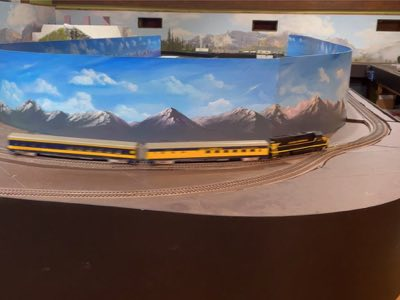 |
|
| Rick displays his handiwork at train night. Yes they look good, but will they operate smoothly? |
The above video shows the passenger cars do indeed operate smoothly. As an added bonus Rick enjoys running his ARR locomotive on the layout. |
Rick brings his rail barge jig by for display/ He uses the calipers to ensure proper separation for the entire length of the rails. |
|
|
|
| Rick spends a good part of train night making various barge height adjustments. This is a three dimensional challenge and grandsons Liam and Lincoln judge if the rail car rolls correctly or if a rail is too high or low. During testing Rick discovers the pair of Whittier tracks are a tad bit short and will need to be replaced with longer sections. |
Long story short, we've been having derailments at the south main Anchorage yard switch. I purchased a new Atlas #8 Right-Hand Mark IV Turnout. Rick does a test fit and discovers a major design change will be needed - plywood base added, existing Styrofoam trimmed, Tortoise switch moved and modification of yard and main track. Another painful process which will in turn make for a better operation. |
|